Difference between Inverter & UPS – Uninterruptible Power Supply
Differences between Uninterruptible Power Supply “UPS” and Inverter
Power outage, a very common phenomenon especially in third world countries but the 1st world countries are not exempted from it. There are multiple causes for power outages in the form of a natural disaster such as, storm, lightning, snow, earthquake, etc. that causes power failure.
The sudden loss of power is very annoying and it could damage sensitive electronics equipment with an abrupt shutdown. Crucial lifesaving equipment in hospitals that needs to work 24/7 with an abrupt power cutoff could risk someone’s life. In such cases of power failure, we use UPS and inverter to provide backup power. They both provide backup power but there function, circuitry and features are very different.
Before going further into the difference, let’s look into what UPS and Inverter is.
- Related Post: Difference Between Online UPS and Offline UPS
What is UPS (Uninterruptible Power Supply)?
UPS is an abbreviation for Uninterruptible Power Supply. It is a device capable of providing backup power in case of power failure. It is connected with a battery that acts as the source of power.
It draws current from the AC mains to power any electronics and also continuously charge the battery but when the power cuts off, it suddenly switches the power source and starts drawing current from the battery. The switching speed is very fast almost below 10ms. Such fast switching does not affect the operation of electronic devices such as a computer.
It is made of a sophisticated circuitry with an inverter and a charge controller. The inverter is used for switching the DC from the battery into AC while the charge controller is used for converting the AC mains into DC and also controls the charging parameters.
The intelligent circuit is the most crucial part of the UPS and it is what differentiates it from an Inverter. It is responsible for sensing any interruption in the power source and in any case, it switches between the primary power supply (AC mains) and the backup supply (battery). But the most important part is the switching speed. It instantly switches without interrupting its power supply which is why it is called Uninterruptible Power Supply.
It continuously draws current from the battery but in very low amount, and as soon as the circuit senses any breaks in the supply from AC mains, the circuit switches to drawing full current from the battery.
This fast switching allows smooth operation of sensitive electronic devices. They are mostly used for computers. It is very frustrating because you can lose data if your computer is abruptly shut down in the middle of doing any important work. It provides enough backup time to save your progress or data and safely shut down your computer.
The UPS also does include circuits for protection against abnormal conditions such as voltage surges and fluctuations, Under Voltage, Over Voltage, etc.
What is an Inverter?
An inverter is an electronic circuit or device that converts DC into AC. It is used for providing backup supply to non-sensitive electronic devices where a delay in switching time does not matter such as lights, fans etc. The switching speed of an inverter is very slower than UPS and because of this; the sensitive equipment may get damaged.
It is basically a DC to AC converter connected with a DC supply such as a battery. It draws current from the battery and converts it into AC supply to power AC appliances. There is no internal charge controller so it cannot charge the battery. If you want to charge your battery, you need an external charge controller for it.
It does not offer protection against abnormal current and voltages. Therefore, the voltage spikes and surges are one of the drawbacks of Inverter that can damage sensitive electronic devices.
The main difference between the UPS and Inverter is its switching time. The switching time of an Inverter is somewhere between 300 and 500 milliseconds. This much delay can cause a shutdown in computers and you may lose your data. But it does provide a longer backup time.
The Inverters can also be used for the generation of variable voltages and frequency outputs which is why a Variable Frequency Drive (VFD) is also called an inverter. These drives are used for variable speed operation of motors.
Differences between Inverter and UPS
| UPS (Uninterruptible Power Supply) | Inverter |
| It is a device that provides AC backup power in case of power failure | It is a device that converts DC supply into AC supply. |
| It can convert Direct Current DC into Alternating Current AC and vice versa at the same time. | It only converts DC into AC. |
| it is made of Inverter and a charge controller | It is one of the crucial parts of a UPS. |
| The switching speed of UPS is 2 to 5 milliseconds | The switching speed of the Inverter is 200 to 500 milliseconds. |
| It can also charge the battery from AC mains. | It cannot charge the battery. It needs external charge controller to charge battery. |
| The supply is not interrupted even after removing of battery (it draws from AC mains) | Removing the battery will interrupt its power supply. |
| It provides protection against abnormal voltages and current. | It does not offer protection against abnormal conditions. |
| It also includes AVR (Automatic Voltage Regulator) that provide a fixed output voltage of 220V or 120V. | There is no AVR hence the output voltage may drop due to heavy load. |
| Its circuitry is more complex than an Inverter | It is a simple circuit which is AC to DC converter |
| It is smart and more expensive than Inverter | It is simple and cheaper than UPS |
| It provides less backup time than Inverter | It provides a longer backup time than UPS. |
| It is used in houses, offices and commercial industries where the delay in power interruption can cause problems. | It is used in an application where the delay in power interruption is not a problem such as lights, fans, homes and offices. |
So the conclusion of this topic is that the UPS and Inverter can be both used for providing backup power but the UPS is more expensive and must be used for sensitive equipment while the Inverter is cheaper and cost-effective for providing backup power to appliances that are not affected by voltage abnormalities and longer switching times.
- Related Post: Difference Between Microprocessor and Microcontroller
Can a UPS be Used as an Inverter and Vice Versa?
A UPS can be used an inverter while an inverter can’t be used as a UPS. To use a UPS as inverter, simply don’t connect the input supply voltage (120V in US and 230V in EU) to the UPS.
You may only connect the battery as a source to the UPS and it will act as an inverter i.e. it will convert the direct current (DC) from the battery into alternating current (AC) and you can feed it to any electrical appliances rated for AC voltages.
Good to know: A UPS can be an inverter but an inverter can’t be a UPS as Inverter is the part of UPS (uninterruptible power supply).
Related Posts:
- Difference between LED and Photodiode
- Difference Between LED and LDR
- Difference Between Phototransistor and Photoresistor (LDR)
- Difference Between JFET and MOSFET
- Difference Between BJT and FET Transistors
- Difference Between Diode and SCR (Thyristor)
- Difference Between Transistor & Thyristor (SCR)
- Difference Between Diode and Transistor
- Difference Between NPN and PNP Transistor
- Difference Between Encoder and Decoder
- Difference Between RAM and ROM – Comparison
- Difference Between CPU and GPU – Comparison
- Difference Between Multiplexer (MUX) & Demultiplexer (DEMUX)
- Difference Between Digital Latch and Flip-Flop Circuits
- Difference Between Combinational and Sequential Logic Circuits
- Difference between Zener Diode and Avalanche Diode
- Difference Between Inverting and Non-Inverting Amplifier
- Difference Between Amplifier and Operational Amplifier
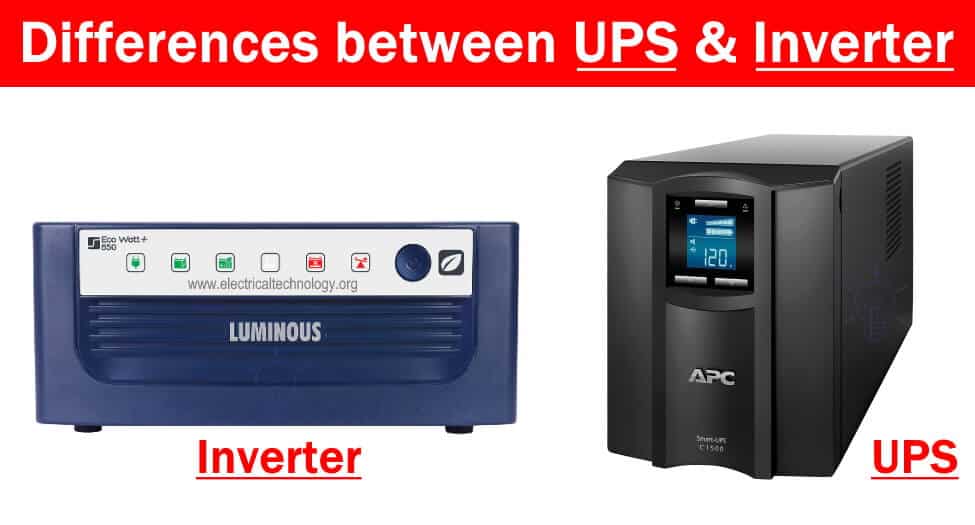
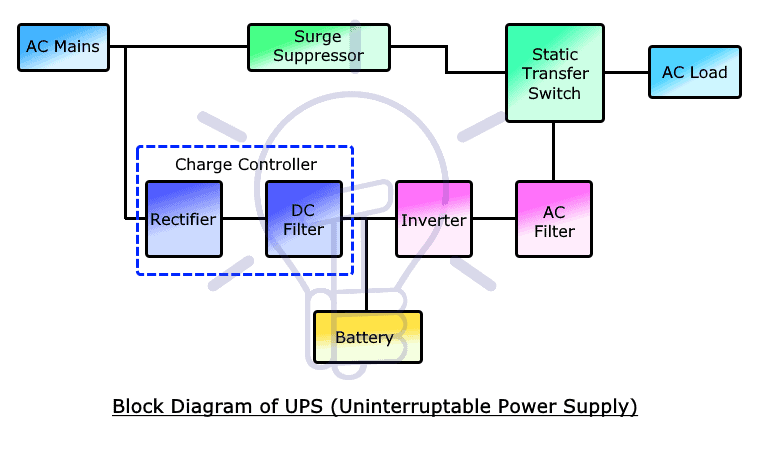
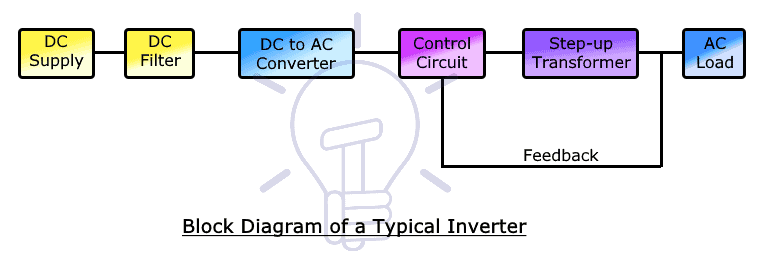




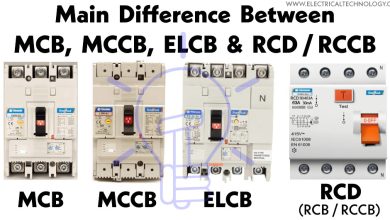
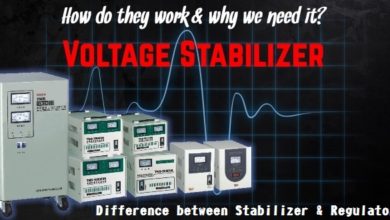

Please,i want to install 5kW inverter,how many solar panels do i need,and how many arms charge controller can be used.
Hi Jonah, Please follow this post on “Complete Solar Panel installation Guide“
DC input to ac output, solar panel DC input to DC output inverter DC output to ac output user appliances. / Ac to Ac appliances .
5kw inverter can take up to 80A charge controller. Depending on your setup, number of solar panel depends on the VDC of your inverter. If you need my hybrid setup using lithium cells feel free to reach me @dvoizz/08068024559.
Am I reading this right? “Power outage, a very uncommon phenomenon especially in third world countries” or am I having a double reverse dyslexia moment?
We got and updated it. Thanks
Inverters can be used for sensitive equipment, and larger types can supply power to whole homes and buildings (e.g. as part of solar system or for buildings not connected to the power grid). They are also used in the power industry, e.g. in HVDC system an inverter converts DC back to AC (at voltages typically >50kV).
Also the UPS depends on the battery and demand. Also not all UPS operate as described.